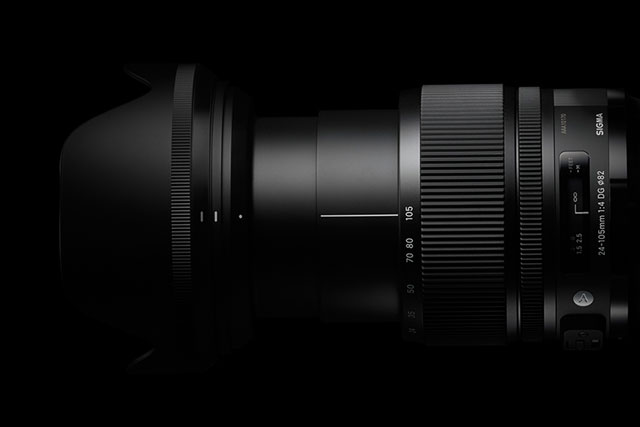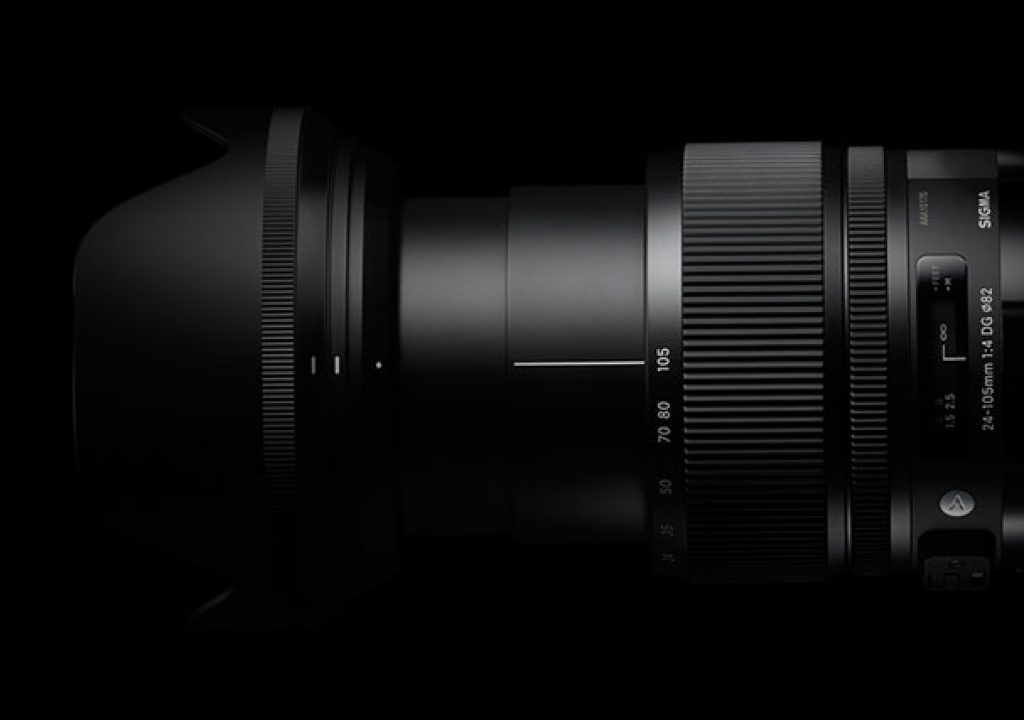
Sigma has recently changed the way they group lenses, and that may be just part of a revolution when it comes to DSLR optics. The company has reorganized their interchangeable lenses into three product lines. So, now there are three Sigma lines to choose from:
- Contemporary, featuring the very latest technology, and combining optical performance with compactness. The high-performance Contemporary line covers a wide range of needs.
- Art, designed with a focus on sophisticated optical performance and abundant expressive power, the Art line delivers high-level artistic expression.
- Sports, offering sophisticated optical performance and expressiveness, the Sports line lenses deliver high action-capture performance, enabling photographers to get exactly the shots they want.
The new presentation of lenses, which also made for a change on the structure of Sigma's website, is not intended to impose, say Sigma representatives, “a new way of categorizing equipment, but simply to clarify the approach we have taken in developing each new lens. Our hope is that these new product lines will help guide photographers, giving an overview of the type of image creation each lens was designed to support. You might think of it as adding tags to a database. The new product line categories provide additional guidance, but it is ultimately the photographer who will consider this information in choosing the right lens.”
Simply by identifying the product line that resonates with his or her own photographic orientation, any photographer will be able to find the right Sigma lenses quickly and easily. This is sure to close the gap between the photos you're taking now and the photos you're capable of taking. Sigma's new product lines are going to redefine the way you relate to photography, they say.
That's the marketing part of it. Translated to photographers needs, it can be seen – and tried by some – on the new lenses proposed by Sigma, that seem to adhere to the “most wanted” pieces of equipment. I am thinking of lenses as the new Sigma 24-105mm f/4 DG OS HSM lens for full-frame DSLRs, latest addition to the Art line-up.
When shooting of scenes in nature or travel destinations, photographers need a high zoom ratio combined with excellent handling to capture all the subjects they encounter. The Sigma 24-105mm F4 DG OS HSM covers the most commonly used zoom range, from wide-angle to medium telephoto. It also takes usability to the next level, offering F4 brightness throughout the zoom range, OS (Optical Stabilizer) functionality, and HSM (hypersonic motor). Thanks to its convenient handling, the Sigma 24-105mm F4 DG OS HSM is an ideal lens for many types of photography such as snapshots, portraits and landscapes.
Sigma says nothing new. In fact the tendency of the market is pointing in this direction. When recently Popular Photography magazine interviewed a series of professional photographers for the article “The Rise of the f/4 Zoom Lens” , the final conclusion was that lens opening to f/2.8 are not as necessary anymore. And the lens everybody seemed to like was the 24-105mm f/4 for Canon and Nikon. sigma is now following that idea presenting their own lens, which will be available somewhere in November. Just in time for Christmas!
The lens is compatible with the USB dock and Sigma’s mount conversion service. The specs for those interested, are:
- Lens Construction: 19 elements in 14 groups
- Minimum aperture: F22
- Filter size: 82mm
- Angle of view (35mm equivalent) 84.1°-23.3°
- Minimum focusing distance 45cm / 17.7in
- Dimensions (Diameter x Length) φ88.6mm x 109.4mm / 3.5in x 4.3in
- Number of diaphragm blades 9 (rounded diaphragm)
- Maximum magnification ratio 1:4.6
- Weight 885g / 31.2oz
This is a full-frame lens covering the most commonly used zoom range, and offering f/4 brightness throughout the zoom range, from wide-angle to medium telephoto. Sigma adds that “this high-performance lens joins Sigma’s Art lineup, fulfilling its stringent requirements. Zoom lenses with a high zoom ratio tend to suffer from astigmatism, field curvature, distortion, chromatic aberration, and other optical aberrations. To minimize these, Sigma’s zoom lens features optimally arranged high-performance single- and double-sided aspheric elements produced by precision glass molding and incorporating FLD (“F” Low Dispersion) glass and SLD (Special Low Dispersion) glass. Minimizing axial chromatic aberration at telephoto distances, this lens offers exceptional image quality throughout the zoom range. In addition, it avoids the reduced peripheral brightness that is common with lenses in the same class. Thanks to its large-aperture 82mm filter size, this lens offers truly outstanding optical performance.”
But there's more, in fact, the company suggests. All lenses in Sigma’s new Art line “come with a hood with a high-quality rubberized connector and feature a newly designed lens cap and AF/MF switch, and are designed for intuitive use and superior functionality. Inside, HSM (hypersonic motor) delivers high AF speed and extremely quiet performance. An enhanced algorithm offers even smoother automatic focusing. Full-time manual focus override is another key feature that leaves the artistic touches in the photographer’s hands. The brass mount combines high precision with rugged construction. Its treated surfaces and enhanced strength contribute to the exceptional durability of the lens. In both the external and internal parts, the optimized use of TSC (Thermally Stable Composite), an excellent match for metal parts, further contributes to the high-precision construction of the lens.”
The offer from Sigma does not stop on this 24-105mm lens. In fact, the company is also pursuing a recent trend for fixed focal lenses with very wide aperture, and an example of that can be seen on another lens from the new Sigma Art line up, the Sigma 35mm F1.4 DG HSM. This wide-angle F1.4 lens delivers the highest level of brightness and beautiful bokeh effects. It offers the unique characteristics that only a large-aperture F1.4 lens can offer: shallow depth of field along with superior low-light and hand-held performance.
It's a philosophy somehow contrary to the one that leads to the construction of the 24-105mm f/4. Here the aim is to offer extreme low-light response on a lens that is a classic in terms of coverage.
With their new offer Sigma seems to want, even further, to be a choice for photographers looking for options beyond those in the camera makers. Having survived the transition from analogic to digital, Sigma knows well that in a time digital images are everywhere, “lens performance requirements have become dramatically higher and more stringent.” Photos can be displayed on computer screens and examined at the pixel level, so lens aberrations show up clearly, and differences in lens performance are obvious at a glance. This is precisely , Sigma says, “why we are focusing on genuinely high picture-quality, doing our utmost to eliminate lens aberrations at the manufacturing stage, and determinedly striving to ensure that optical data reaches the image sensor with no interference on the way.”
So, the new Contemporary, Art and Sports divisions may be more than just a cosmetic change, and really reflect a new way to build lenses. Examples like the new Sigma 24-105mm f/4 DG OS HSM seem to promise may confirm that Sigma wants to keep in business. And competing at the top line when it comes to optics.


